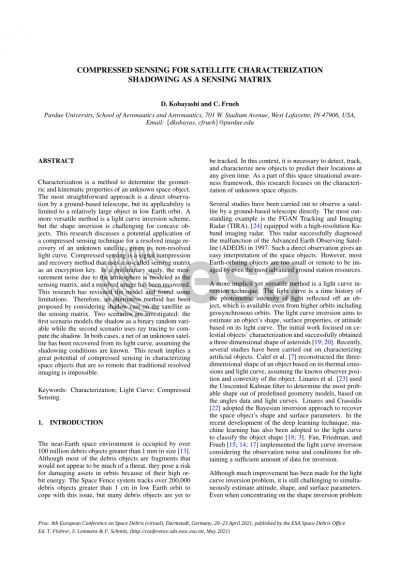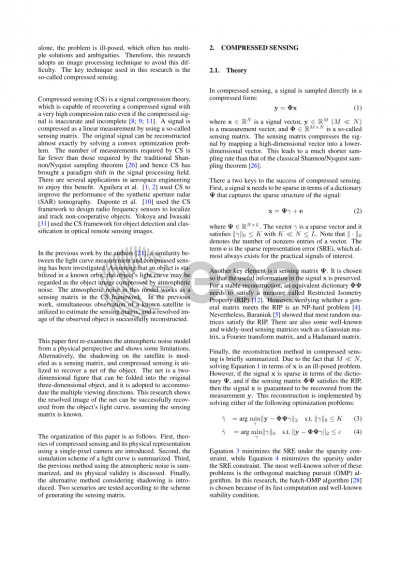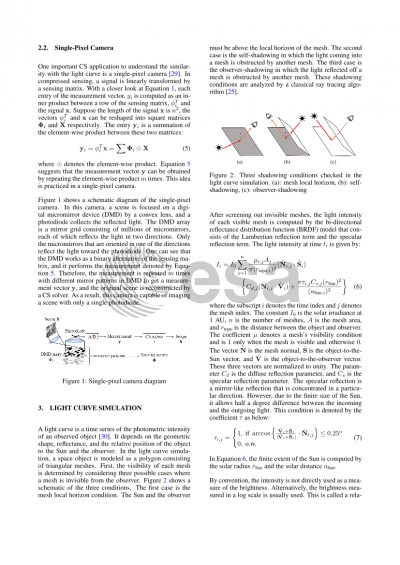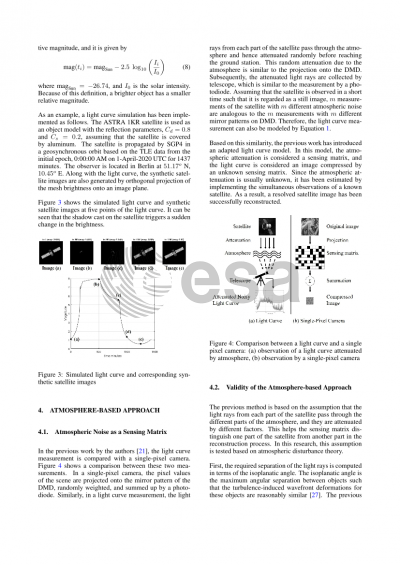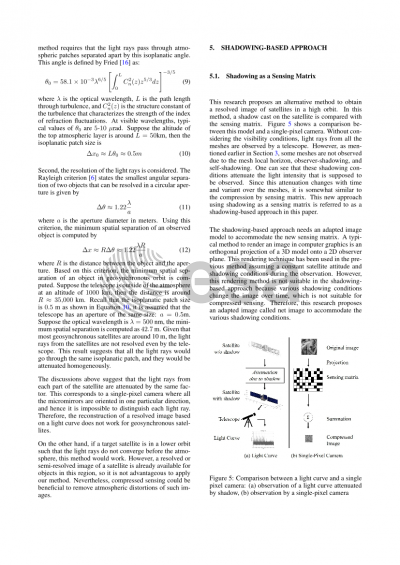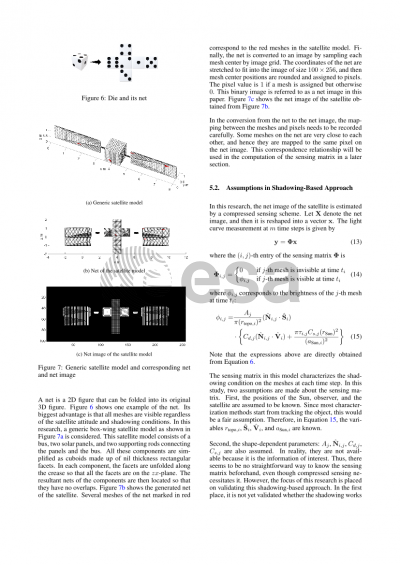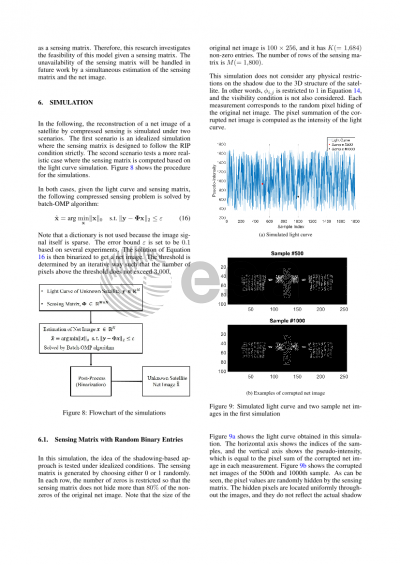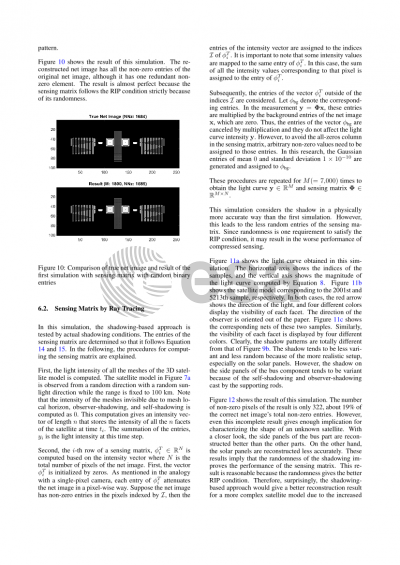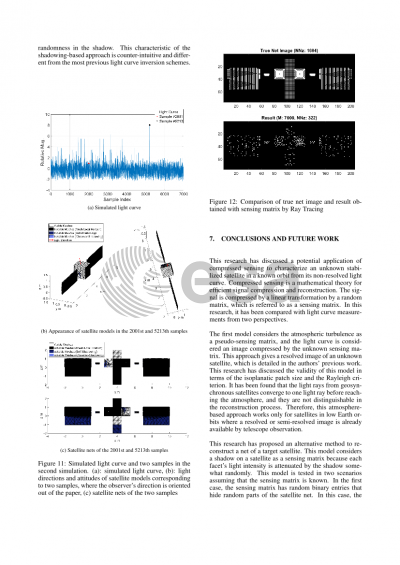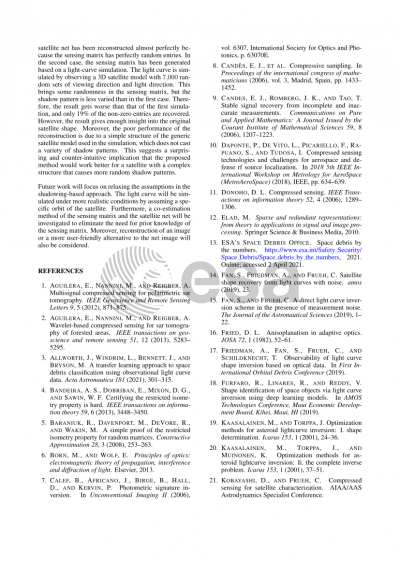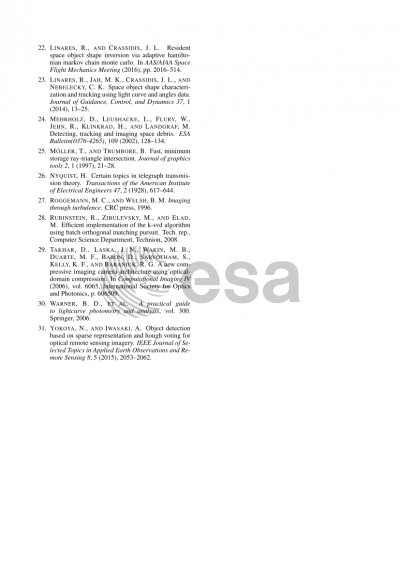Document details
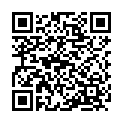
Abstract
Characterization of space objects around the Earth is a crucial step in space situational awareness. However, current approaches have limitations in the sizes and altitudes of the objects they can capture. This research introduces a potential application of a compressed sensing technique to characterize an unknown space object in a known geostationary orbit by recovering its resolved image.
Compressed sensing was developed for efficient signal compression and reconstruction. It can recover unknown signals from a small number of random measurements even if they are inaccurate and incomplete. It compresses a signal as a linear measurement by using a sensing matrix and reconstructs the signal with the knowledge of the sensing matrix.
This research has focused on the similarity between the light curve measurement and the signal compression in compressed sensing. The light from a space object is scattered and attenuated randomly by the atmosphere around the Earth before being measured by a ground-based telescope. Therefore, for a stabilized satellite in a known orbit, its light curve can be regarded as a compressed image of the satellite, being filtered by atmospheric degradation. In this model, the atmosphere is considered as a pseudo-sensing matrix.
However, the major difference with compressed sensing is that the knowledge of the sensing matrix is not available because the atmosphere is a non-stationary random process. Therefore, the main focus of this research is the estimation of the satellite image in the absence of the pseudo-sensing matrix.
In the proposed approach, simultaneous observation of a reference satellite is utilized to solve this problem. Assuming that the reference satellite is observed within the isoplanatic angle of an unknown satellite, these two satellites would share a common atmospheric condition. If we assume that the resolved image of the reference satellite is available, the pseudo-sensing matrix can be estimated from its light curve and its image, and it can be utilized to recover an unknown satellite image from its light curve.
The success of the proposed method depends on the atmospheric degradation model. For a stable reconstruction in compressed sensing, it needs to satisfy the restricted isometry property. In the preliminary studies, a zero-mean Gaussian matrix that meets the requirement has been used to model the atmospheric degradation. Two scenarios are investigated: the first scenario assumes that the number of reference satellite images is enough to sample the atmosphere, while the second scenario assumes the undersampled case. In both cases, the pseudo-sensing matrix has been accurately estimated by a compressed sensing solver. A more rigorous atmospheric degradation model that considers aerosol scattering, atmospheric turbulence, and aberration in the optical system is also considered.
In this paper, the recovery of a resolved image of an unknown space object from light curves without the knowledge of the sensing matrix is explicitly shown. Given the light curve and the reference satellite images, a pseudo-sensing matrix is estimated, and an image of the unknown satellite is successfully determined by a compressed sensing scheme. This result implies the great potential of compressed sensing in characterizing space objects that are so remote that traditional resolved imaging is not possible.
Preview
